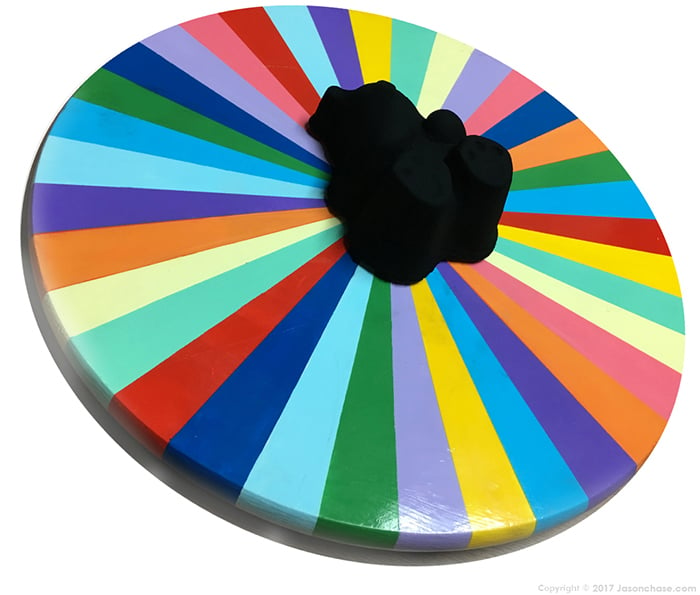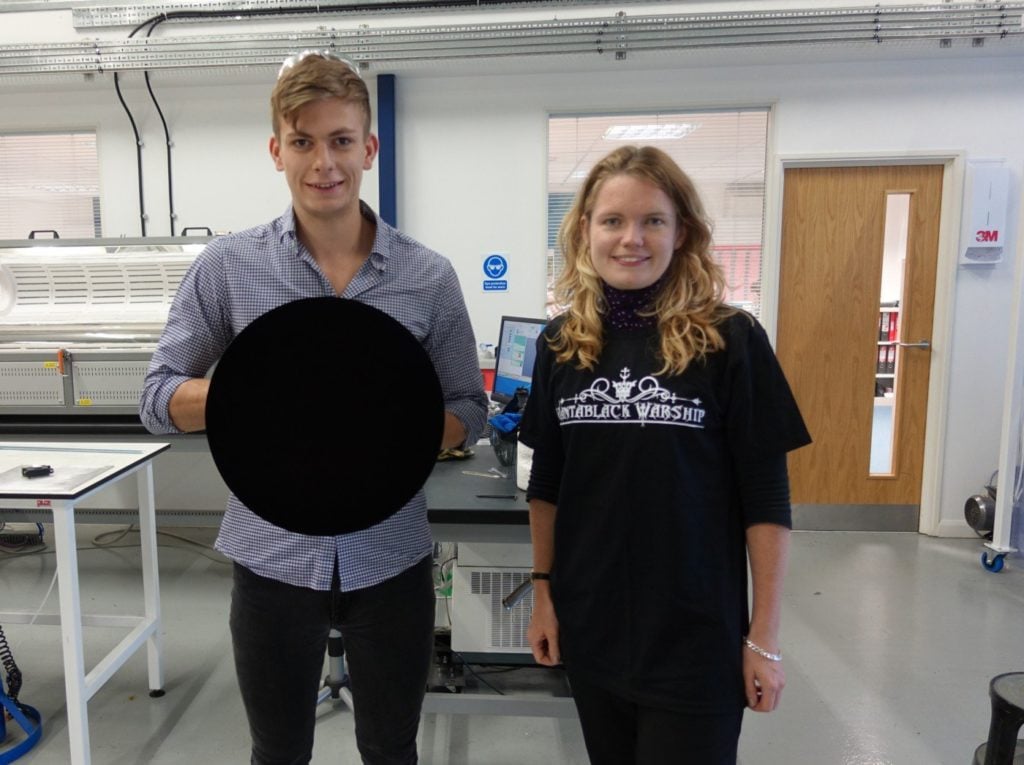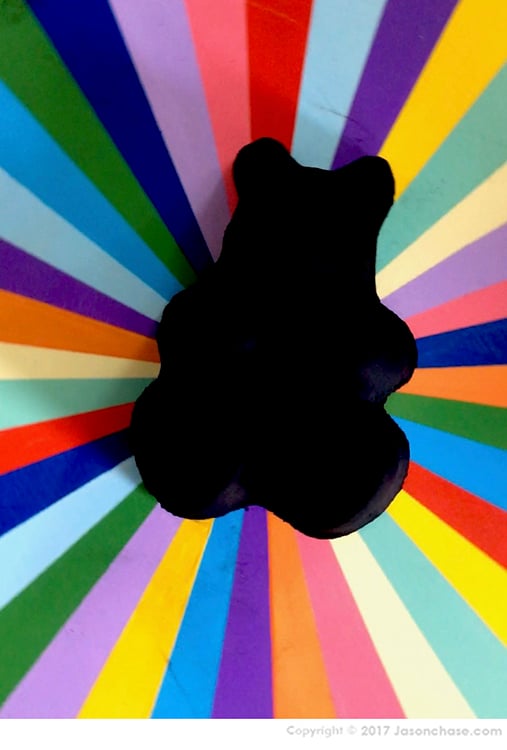Art World
Lab Introduces Singularity Black, the Blackest Paint—And You Don’t Have to Be Anish Kapoor to Use It
NanoLab, Inc. presents a new super-black paint that, unlike Vantablack, is for everyone.

NanoLab, Inc. presents a new super-black paint that, unlike Vantablack, is for everyone.

Ever since Anish Kapoor signed an agreement with Surrey NanoSystems, for the exclusive artistic use of the world’s blackest black, Vantablack, the art world has been up in arms. Luckily, Waltham, Massachusetts, firm NanoLab, Inc., has introduced a carbon nanotube black paint of their own, called Singularity Black, and anyone can use it.
Last month, Massachusetts-based artist Jason Chase unveiled the first artwork created using Singularity Black, titled Black Iron Ursa. He coated a cast-iron gummy bear sculpture in the uncannily dark substance, displaying it against a wooden circle painted in rainbow wedges to best accentuate the blackness of the material, which makes the 3-D form look flat and featureless.
“Being the first artist to use this technology, I want to share it with my fellow artists and collectors. It is important to create access so artists can use it,” said Chase in a statement. “Artists are always the ones who take new materials and push them to new limits.”

Vantablack. Courtesy of Surrey NanoSystems.
He noted that Kapoor’s Vantablack had prevented experimentation and stunted the artistic possibilities of working with the new materials, but that “starting with my work, those days are over.” (Kapoor has had a high-profile feud with artist Stuart Semple, who has released a “pinkest pink” and “most glittery glitter” that Kapoor is banned from using. Semple has also created a “blackest black” paint of his own, called Black 2.0.)
The invention of Vantablack, which absorbs 99.96 percent of light, was announced in 2014. Not a pigment, Vantablack is actually a dense network of carbon nanotubes, grown in a high-heat chamber. The company has since developed a spray paint version.
Singularity Black, which combines carbon nanotubes with a binding agent for stabilization, was invented separately by NanoLab in 2011 under contract to NASA. It is used by the space agency in equipment for observation of far away stars, absorbing stray light so as not to interfere with the sensors.
The best way to use Singularity Black, which the company describes as “a paint-like analog of the aligned forest,” is inside a fume hood or spray booth, and ideally should be applied on a metal surface. After application, the paint must be super heated to 600 degrees Fahrenheit to eliminate the binder. “Once activated, it is a ‘no-touch’ surface,” notes the product description.

Jason Chase, Black Iron Ursa, created using Singularity Black, a light-absorbing black paint made with carbon nano tubes by NanoLab. Courtesy of Jason Chase.
“The paint is really fragile,” Chase told the Boston Globe. “If you touch it, it’s going to flake off, kind of like when you touch a butterfly’s wings.” He plans to share his ongoing studio research about how to best use Singularity Black, and hopes to curate a group show of works made using the new paint.
NanoLab estimates that Singularity Black will cost somewhere in the low to mid-hundreds of dollars for 250 milliliters to one liter of paint.
Jason Chase’s Black Iron Ursa will be on view at Laconia Gallery, 433 Harrison Avenue, Boston on August 24; and at the Artisan’s Asylum, 10 Tyler Street, Somerville, Massachusetts on September 6.